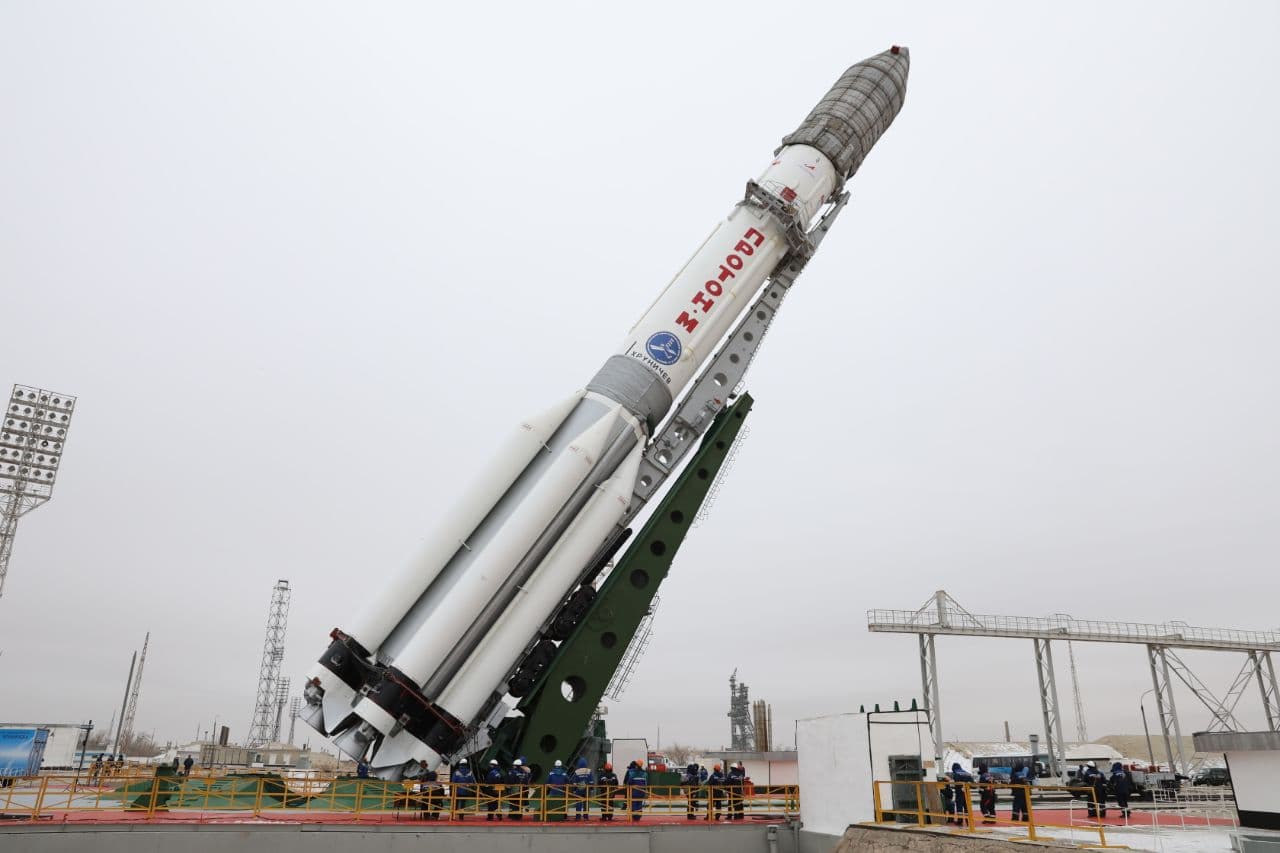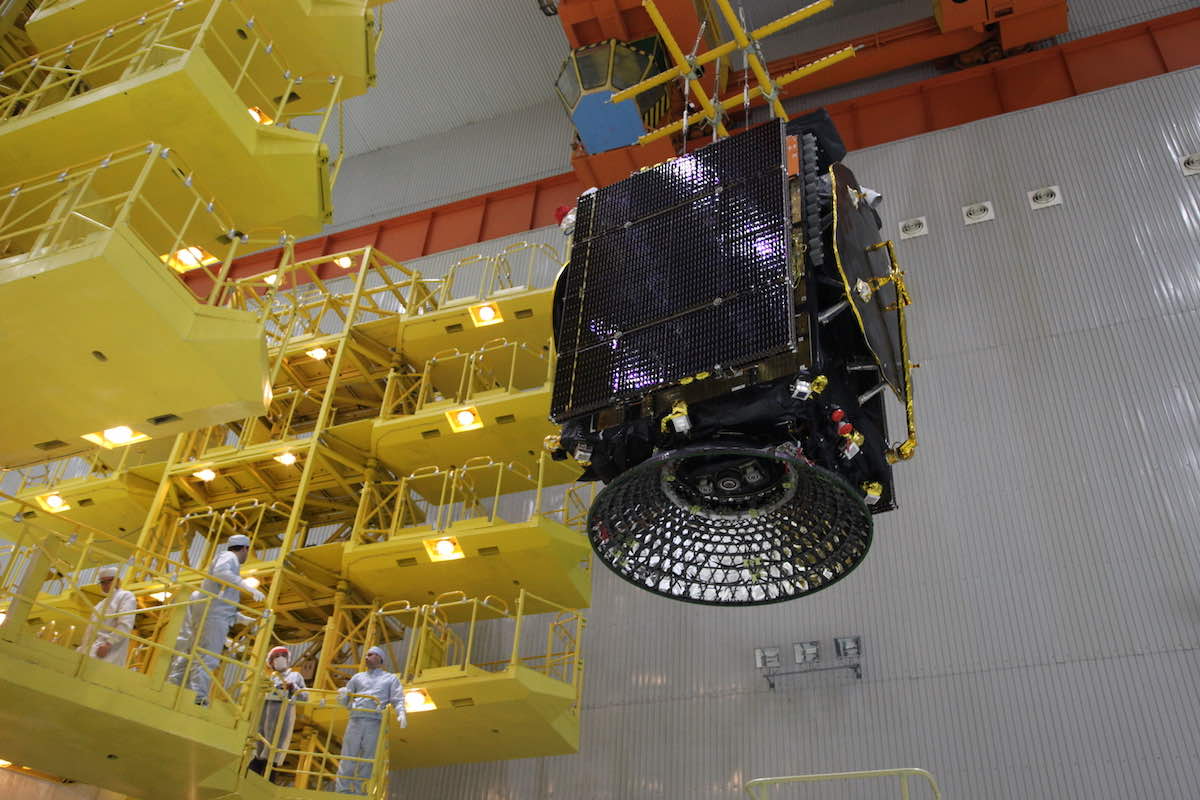
Two Russian telecommunications satellites will ride a Proton rocket and Breeze M upper stage into a high-altitude orbit after launch Monday from the Baikonur Cosmodrome.
The mission took off at 7:07 a.m. EST (1207 GMT) Monday, and will last 18 hours from launch through separation of the final spacecraft, one of the longest ascents ever for a Russian rocket.
Russian teams previously planned to launch the mission Sunday, but discovered a technical issue with the Breeze M upper stage after rolling the Proton rocket to the launch pad at Baikonur on Dec. 9. Technicians returned the rocket to a nearby hangar for troubleshooting, and transferred the Proton to the pad at the Site 200 complex again Saturday in preparation for a launch attempt Monday.
The Russian Express AMU3 and Express AMU7 communications satellites are mounted one top of the other inside the Proton rocket’s payload shroud. The two spacecraft are designed to operate for the Russian Satellite Communications Co., a government-backed enterprise that manages Russia’s civilian telecom satellite fleet.
The new satellites will provide digital TV and radio broadcast services, high-speed internet connectivity, and other data transmission capacity over Russia and neighboring countries, according to RSCC.
The 191-foot-tall (58.2-meter) Proton rocket ignited its six RD-276 main engines — consuming a toxic mix of hydrazine and nitrogen tetroxide propellants — and fired away from the historic Baikonur spaceport at 5:07 p.m. local time Monday, just after sunset. Heading northeast, the rocket’s engines generated 2.5 million pounds of thrust for the first two minutes of flight.
After the first stage jettisons, the second stage and third stage fired in succession to send the Breeze M upper stage and the dual comsat payloads on a ballistic suborbital trajectory.
Then the Breeze M took control of the rest of the marathon mission, with a flight plan including five main engine firings to gradually reshape its orbit to ultimately reach an elliptical path around Earth ranging in altitude between 11,600 miles (18,700 kilometers) and nearly 32,900 miles (52,900 kilometers).
The first Breeze M burn is programmed to place the Express AMU3 and Express AMU7 spacecraft into a preliminary low-altitude parking orbit. The additional maneuvers over the 18-hour launch sequence will raise the orbit higher and nudge the satellites closer to their final operating positions over the equator.
The 4,365-pound (1,980-kilogram) Express AMU7 satellite, situated in the upper position of the dual-payload stack, will separate first from the Breeze M upper stage at 12:57 a.m. EST (0557 GMT) Tuesday, according to a mission timeline released by Roscosmos, the Russian space agency.
The Express AMU3 spacecraft, with a launch weight of 4,740 pounds (2,180 kilograms), will be released by the Breeze M upper stage at 1:14 a.m. EST (0614 GMT).
Both satellites carry plasma thrusters to circularize their orbits at geostationary altitude more than 22,000 miles (nearly 36,000 kilometers) over the equator about two months after launch.

Express AMU7 is heading for a position at 145 degrees east longitude, where it will replace the Express A4 communications satellite launched in 2002. Express AMU3 will settle into a geostationary parking spot at 103 degrees east longitude, replacing Express AM3, which has been in service since 2005.
Both satellites were built by ISS Reshetnev, a Russian spacecraft manufacturer, and are designed for missions lasting at least 15 years. They carry telecommunications payloads supplied by Thales Alenia Space of France.
Express AMU3 and AMU7 are outfitted with C-band, Ku-band, and L-band transponders. From its more western position, Express AMU3 will cover Central Russia, Kazakhstan, and other parts of Central Asia. Express AMU7’s coverage zone is centered on Siberia and Russia’s Far East.
The launch of Express AMU3 and AMU7 was one of few remaining flights confirmed to launch with Russia’s heavy-lift Proton rocket. It marked just the second Proton launch this year, following the liftoff of Russia’s Nauka lab module in July heading for the International Space Station.
The launch Monday was just the fourth Proton launch in nearly two years.
Email the author.
Follow Stephen Clark on Twitter: @StephenClark1.
